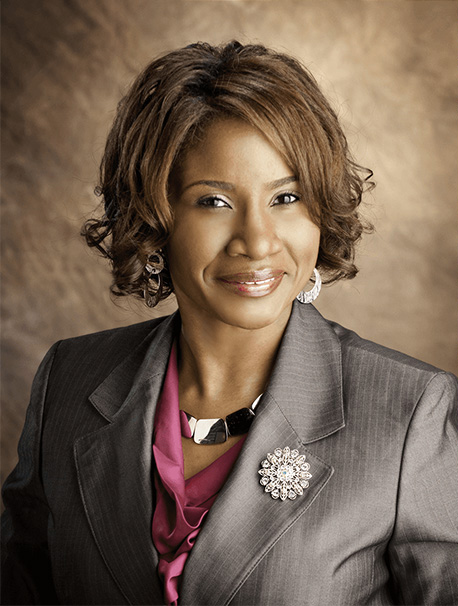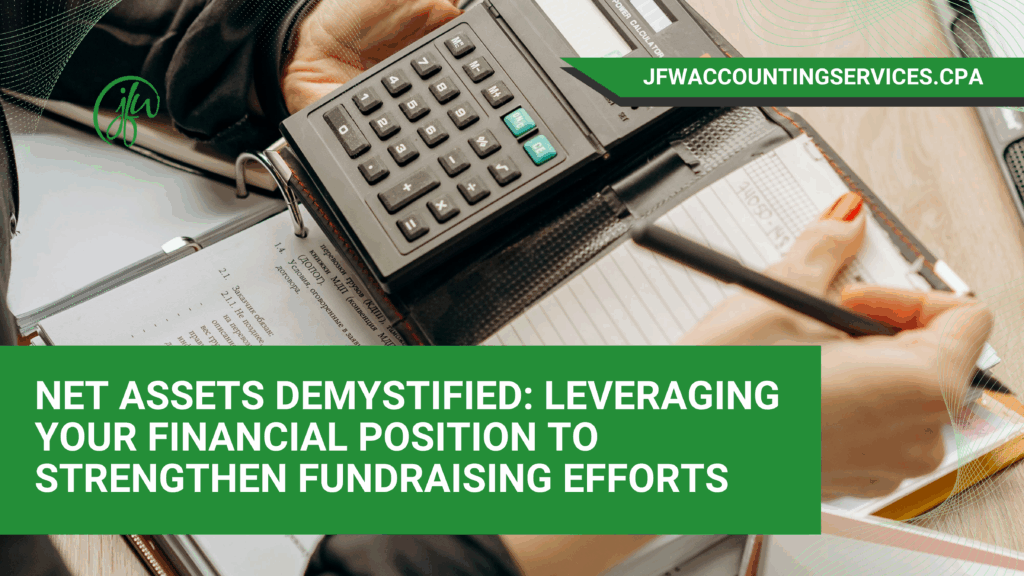Most nonprofit net assets remain a mystery to leadership teams who can recite budget figures from memory but struggle to explain their financial position to major donors. This knowledge gap about nonprofit net assets costs organizations millions in missed opportunities every year. When donors can’t clearly see how their contributions strengthen your nonprofit net assets, they often look elsewhere for giving opportunities that offer greater transparency and accountability.
Understanding Nonprofit Net Assets and Their Impact
Net assets reflect the difference between what your organization owns and what it owes – essentially your nonprofit’s net worth. Unlike for-profit businesses that track owner’s equity, nonprofits focus on net assets to demonstrate stewardship and financial health to stakeholders.
The Financial Accounting Standards Board (FASB) requires nonprofits to categorize net assets into two main types: net assets with donor restrictions and net assets without donor restrictions. This classification helps donors and board members understand how funds can be used and when they’ll be available.
Net assets without donor restrictions include unrestricted funds that support general operations, board-designated reserves, and permanently restricted endowment earnings released for use. Net assets with donor restrictions encompass temporarily restricted funds designated for specific programs or time periods, and permanently restricted endowments that must remain intact.
How Donors Evaluate Your Financial Statements
Savvy donors examine net asset ratios before making significant contributions. They look for organizations that maintain appropriate operating reserves – typically three to six months of expenses in unrestricted net assets. This cushion demonstrates financial stability and the ability to weather unexpected challenges.
Donors also assess the ratio between restricted and unrestricted net assets. Organizations with too many restrictions may appear inflexible, while those with too few restrictions might seem to lack focused programming that attracts targeted giving.
The statement of activities shows changes in net assets over time, revealing growth trends and funding sustainability. Proper recording of net assets requires careful attention to donor intent and timing of restrictions.
How Nonprofit Net Assets Build Donor Trust
Clear communication about net asset management builds trust with current and prospective donors. Regular board reports should include net asset summaries that explain restrictions, spending policies, and reserve targets.
Endowment spending policies deserve special attention. Donors want to know their permanent gifts will generate consistent support while preserving principal. Understanding nonprofit net assets helps organizations develop sustainable spending rates that balance current needs with long-term growth.
Board-designated funds offer another tool for building confidence. When boards formally designate unrestricted funds for specific purposes – such as facility improvements or program expansion – they demonstrate forward-thinking governance that appeals to donors interested in strategic growth.
Practical Strategies for Effective Net Asset Management
Start by establishing clear policies for net asset classification and reporting. Train staff to properly document donor restrictions at the time of gift receipt. Create systems that track restricted funds throughout their lifecycle, from initial receipt to final expenditure.
Develop comprehensive reserve policies that define target amounts for different scenarios. Operating reserves should cover short-term cash flow gaps, while special reserves might address equipment replacement, board-designated initiatives, or economic uncertainties.
Net asset reporting on the statement of activities should clearly show releases from restriction when temporarily restricted funds are used for their intended purposes. This transparency demonstrates faithful stewardship of donor intent.
Regular financial statement preparation allows organizations to monitor net asset trends and identify concerning patterns before they become problems. Monthly reports should include both absolute amounts and ratios that provide context for financial health.
The Fundraising Connection
Well-managed net assets directly support fundraising success in several ways. Organizations with healthy unrestricted reserves can pursue grant opportunities that require matching funds or upfront investment. They can also weather delays in grant payments without compromising program delivery.
Donors interested in capital campaigns or major gifts often request detailed financial statements going back three to five years. They want to see consistent net asset growth and responsible management of previous contributions.
The ability to demonstrate financial stability through net asset management also opens doors to larger institutional funders, including foundations and government agencies that require audited financial statements and evidence of organizational sustainability.
Professional Guidance Makes the Difference
Managing net assets effectively requires expertise in nonprofit accounting standards, donor relations, and financial planning. Many organizations benefit from professional support to establish proper systems and training.
Technology solutions can streamline net asset tracking and reporting. Modern accounting software designed for nonprofits automatically categorizes transactions and generates reports that clearly show restricted and unrestricted balances.
Regular financial audits provide external validation of net asset management, giving donors additional confidence in organizational stewardship. Audit findings often include recommendations for improving net asset tracking and reporting processes.
Long-term Impact on Organizational Health
Organizations that master net asset management typically enjoy stronger donor relationships, more successful fundraising campaigns, and greater financial stability. They can make strategic decisions based on clear understanding of available resources and constraints.
This financial clarity also supports better program planning. Knowing exactly what funds are available and when restrictions expire allows for more effective resource allocation and timing of initiatives.
The result is a virtuous cycle: better net asset management leads to stronger financial position, which attracts more donors, generating additional resources that further strengthen the organization’s capacity to fulfill its mission.
Turn Knowledge Into Action
Understanding and communicating about net assets doesn’t have to be complicated. Start with basic education for board members and staff about the different categories and their implications. Then focus on developing clear policies and consistent reporting practices.
Book your client assessment today to learn how we can help strengthen your net asset management and financial reporting. Our team provides expert guidance on nonprofit accounting best practices, compliance requirements, and financial systems that support successful fundraising while maintaining donor confidence in your stewardship.

Jo-Anne Williams Barnes, is a Certified Public Accountant (CPA) and Chartered Global Management Accountant (CGMA) holding a Master’s of Science in Accounting (MSA) and a Master’s in Business Administration (MBA). Additionally, she holds a Bachelor of Science (BS) in Accounting from the University of Baltimore and is a seasoned accounting professional with several years of experience in the field of managing financial records for non-profits, small, medium, and large businesses. Jo-Anne is a certified Sage Intacct Accounting and Implementation Specialist, a certified QuickBooks ProAdvisor, an AICPA Not-for-Profit Certificate II holder, and Standard for Excellence Licensed Consultant. Additionally, Jo-Anne is a member of American Institute of Certified Public Accountant (AICPA), Maryland Association of Certified Public Accountants (MACPA), and Greater Washington Society of Certified Public Accountants (GWSCPA) where she continues to keep abreast on the latest industry trends and changes.

